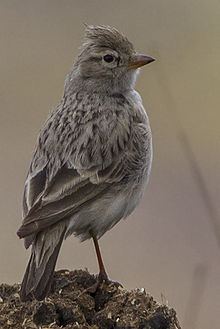Order Passeriformes Higher classification Calandrella | Phylum Chordata Family Alaudidae Scientific name Calandrella acutirostris Rank Species | |
 | ||
Similar Lark, Bird, Sand lark, Calandrella, Tibetan lark | ||
Hume's short-toed lark (Calandrella acutirostris) is a species of lark in the family Alaudidae. It is found in south-central Asia from Iran and Kazakhstan to China.
Contents
Taxonomy and systematics
The name commemorates the British naturalist Allan Octavian Hume who described the species. The alternate name short-toed lark may also be used for three other species in the genus Calandrella. The alternate name lesser short-toed lark should not be confused with the species of the same name, Alaudala rufescens. Other alternate names for Hume's short-toed lark include Hume's lark and Karakoram short-toed lark.
Subspecies
Two subspecies are recognized:
Description
Hume's short-toed lark is similar in size and appearance to the greater short-toed lark but is generally a duller-looking bird with slightly darker plumage and a slightly smaller beak. As with the greater short-toed lark, the colour varies across the broad range and is not a good distinguishing feature. Hume's short-toed lark grows to a length of from 13 to 14 cm (5.1 to 5.5 in) and the sexes are similar. The crown is brown with slight diffuse streaking, the cheeks are rufous-brown and the supercilium white. The upper parts are greyish-brown or sandy brown with darker streaking, and the upper tail coverts are washed with rufous-brown. The wings are greyish-brown with black barring and pale tips to the feathers. The underparts are mostly whitish, but there is a dark neck patch and a buffish-grey breast band. The breast is unstreaked. The voice helps distinguish this species; vocalisations include a shrill "trree" and a more rolling "drreep".
